History in your neighborhood: WikiProject NRHP
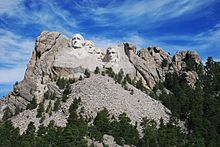
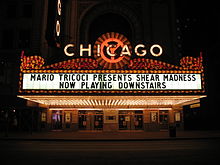


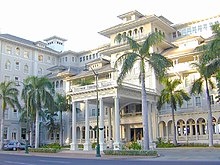
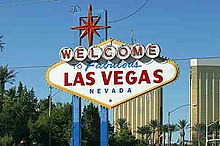




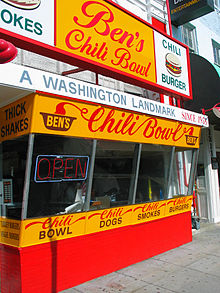




Today, WikiProject National Register of Historic Places celebrates its fifth birthday. The project was founded by Ebyabe to improve Wikipedia's coverage of listings on the National Register of Historic Places in the United States. WikiProject NRHP offers a variety of resources, maintains a style guide, and operates task forces on historic districts and buildings designed by Frank Lloyd Wright. In addition to Ebyabe, we interviewed IvoShandor, Dudemanfellabra, Smallbones, Daniel Case, 25or6to4, Nyttend, Teemu08, and Orlady.
What motivated you to join WikiProject National Register of Historic Places? How many NRHP sites have you visited?
- IvoShandor: I joined the project for much the same reason I suspect many people joined. My reason was it was an easy way for me to participate in WP early on, when I knew little about the 'pedia and the rules and regulations governing it. It was the local angle that mainly attracted me, it was a way for me to expand local coverage of my region on Wikipedia, there are so many NRHP sites that almost every town and city with more than 3,000 people has at least one site. As far as sites visited, I stopped counting, it's in the hundreds. I now live in Chicago and the NRHP sites in this city are overwhelming, there are so many that sometimes I don't even know that I am at an NRHP site when I am at one. One thing that I, and other users (such as Ebyabe) enjoy doing is traveling around on NRHP tours to photograph and see sites. I have visited almost every county north of of Springfield, Illinois to do just that and have contributed over 1500 images to Wikimedia Commons. I now regularly journey around Chicago to do the same, though today I contribute far fewer images.
- Dudemanfellabra: When I originally began editing articles on Wikipedia, I had no intention of ever joining WP:NRHP, and frankly I had never even heard of the National Register of Historic Places. Like many people who are just starting out on Wikipedia, I restricted to myself to things of which I had local knowledge. I began by editing the Meridian, Mississippi article (my hometown), and then I branched out into several articles about locations in the city and surrounding area. When I added a picture to Highland Park Dentzel Carousel and Shelter Building, a National Historic Landmark, that drew the attention of a few members of the project, and I was guided into the project very quickly and effortlessly. Since then I have written articles for many of the NRHP listings in Meridian, as well as a few articles outside of the area. I have visited probably about 50 NRHP listings and photographed them.
- Smallbones: I edited for 2 years before finding my local "county list" National Register of Historic Places listings in Delaware County, Pennsylvania. I immediately loved it: everybody could see the list and see the name, address and coordinates of the main local historical places. The only thing missing was photos - big empty spaces on the list. So, with zero photographic experience, I figured I could snap the 80 or so photos needed without too many problems. I managed to get most of the needed photos in the county. I also learned enough so my photos got to the "passable" level fairly quickly. Sometimes, I think they even get to a "good" level now (can I show one? File:Bridgeton Presby.JPG). It's a treasure hunt tracking down these sites. Folks at WT:NRHP helped get me going. In short it's become addictive. I've filled in 1415 of those empty spaces in the county lists in 3 years. And probably visited another 100 or so sites that already had pix.
- Daniel Case In my pre-wiki life, I used to be a reporter for a local weekly newspaper here in the Hudson Valley. One of my jobs was to write one feature a week on a local landmark in the Newburgh, NY, area. These included things like the Balmville Tree and the Silas Gardner House. I stumbled on the article for the former in early 2006. That led to the project and the county lists. I instantly realized there was something I could contribute, and WP:NRHP has become the biggest aspect of my wikilife since then. I have photographed and written about listings in eight states and gotten very conversant in the NRHP and how it works.
- Ebyabe: Having started the project, let me recount it's genesis, to the best of my memory. I was stubbing Florida State Parks articles, and noticed several were also on the NRHP. I've always had an interest in history, but wasn't really aware of the NRHP. Once I learned more, I thought I'd de-redlink all the Florida NRHP pages. After creating stubs for the sites, or maybe towards the end of that period, it was suggested that a project related to the NRHP might be a good idea. I thought, "Why not? I never imagined it would grow to the extent it has. After I started the project, I made a personal goal to visit and photograph all the NRHP sites in Florida. I modified it to accessible sites, as some are protected archaeological sites, or underwater, or otherwise hard to get to. The goal is mostly accomplished goal, about 90% done. I've also visited sites in Georgia. My current total is 1,576, with about a dozen from before the project started.
- 25or6to4: I only originally started with the project mainly for technical reasons; to update lists with new listings, convert tables, make maps, correcting site locations, etc. But going through the lists, I realized just how many sites I've driven past (or even atop of!), but never realized just how historic they were. Or I would be traveling on vacation and come to a place that had the ever-popular NRHP plaque, and would wonder just how the site fit into the local history. So now anytime I go on vacation, I'm investigating sites ahead of time so I can bring information back to share with WP and everyone that might not get to see this history, or won't know of the history otherwise.
- Nyttend: Almost immediately upon joining Wikipedia, I began adding photographs: rural western Ohio, where I grew up, was severely underillustrated, and my camera was an easier way to add content than researching and adding text. Two years later, while working on a summer job in Pittsburgh, I found National Register of Historic Places listings in Pittsburgh, Pennsylvania and observed that there were multiple unphotographed spots near me; project members encouraged me to add them to the list. I soon started adding photos for other spots and adding tables (at that point, we were in the middle of moving from bulleted lists to comprehensive tables); I didn't start writing NR articles or join the project until well afterward. Since I started counting in 2008, I've visited 2,447 sites, including over 1,100 in Ohio and just about 50% of the ones in Indiana.
- Teemu08:: I first became aware of the NRHP in 2007. It was the heyday of portals and after helping to bring the alternative rock portal to featured status, I decided to do a similar one for my home-state of Illinois. As I filled up Portal:Illinois with information, I realized that I needed DYK hooks. I found that almost all of the recent Illinois-related DYKs were for historic sites across the state. Later that month, I dabbled with creating an Illinois NRHP DYK of my own, but it never came to fruition. In the summer of 2010, I decided to renew my efforts with the project. Shortly thereafter, I discovered that NRHP nomination forms were freely available online, giving me enough data to fill in an entire county's worth of sites. I enjoyed learning about local history and the prospect of educating others on it. Soon thereafter, I started taking pictures both for a personal collection and to supplement Wikipedia. Since August 2010, I have visited 284 sites on the National Register of Historic Places.
The project turned five years old this month. What is the secret to the project's longevity? How has the project changed in those five years?
- Dudemanfellabra: Well, I didn't join the project (or the encyclopedia) until 2008, so most of the groundwork was already laid out before I got involved. I have noticed over the years, though, that the project has a very large scope, largely because of the register itself, so pretty much anyone interested in the history of their local area can help out. There has always been a core group of editors focused on nation-wide standards such as infoboxes, naming conventions, disambiguation, assessment, etc., but it is my observation that most people in the project tend to stick to writing articles about listings in their geographical regions (e.g. I usually stick to Meridian, MS articles), specific types of buildings (some users write only about Masonic buildings, etc.), or basically whatever it is that they are interested in. Everyone is pretty much able to do as they please, and there is a niche for nearly any type of editor. Yes there have been spats of argument among members of the project that might bring in comments from the normally silent majority of our members, but in the end, people simply return to their niches and life goes on. I believe it is this freedom that allows so many people to contribute positively to the project and thus will keep it going strong for many years to come.
- Smallbones: It's definitely the diversity and freedom within the project. Different editors do their own things and get help from others. It's not just East Coast, but also Detroit and Nebraska, Oregon, Denver, etc. It's not just local history people but also folks interested in architecture, public art, museums, railway locomotives, ships, churches, cemeteries, bridges and canals, parks, biography, military history, and more. Some people concentrate on photography, others take care of the list maintenance, others create many "good stubs," some love doing DYKs, and a few just seem to aim for FAs. And some try for it all.
- Daniel Case. They're both right. It's the local connection, and the scope.
- Ebyabe: I'd say the project's success lies in it's niche-ness. One might also call it diversity. The scope of the project is so large that almost anyone can find an area of interest that's covered by it. I like to think we're a welcoming project, where people can share information and help each other out with problems. Sometimes things can get a bit contentious, but I doubt that's unique to our project. That's just human nature. I think, on a whole, we've learned to work together and on occasion agree to disagree. Change in the last five years? Well, we've gotten bigger. Plus we've engaged in large group drives, like getting articles (at least stubs) for all the National Historic Landmarks.
- Teemu08 I find that a big secret to its success is its goal-orientated nature. Most lists of NRHP by county are filled with a sea of red links. As we write articles, we slowly chip away at the red links until the entire county is filled with quality articles. Likewise, on the picture front, one can set a goal of taking all of the pictures of a particular county. Completing such a list can be a reward in itself.
When we first interviewed the project in 2009, Ebyabe envisioned that the project would eventually create an article for every listing on the NRHP accompanied by a picture. Is this still the project's primary mission? How close have you gotten to reaching that goal? What challenges must be overcome?
- Dudemanfellabra: Yes, that is still the project's primary mission. At the time of this response, it appears that there are almost 34K articles about NRHP listings, as well as around 3K lists of properties. When Ebyabe quoted the number of articles under the project back in 2009, he was probably including dab pages, project pages, redirects, and other pages that aren't actually articles about sites on the register (including those now says we have 41K articles.. more than double of 2009). Since that interview we have started an assessment drive (lately spearheaded by Ebyabe himself) to more accurately portray the number of articles we have and exactly what those articles are, so the numbers we have today are much more accurate. We also have increasingly kept up with what we call "fully illustrated lists" – lists that have an image for every single entry in the table(s). Though we obviously still have not gotten 86K+ articles started, we are steadily making progress. Since Christmas 2010 (about the same time this assessment drive began), we have added about 4K articles. We now have about 40% of the NRHP covered on Wikipedia. Still, a large percentage of the NRHP is uncovered, but the progress we are making is great in my opinion.
- Smallbones: Check back in a few years, we'll get it done!
- Daniel Case. Ask the NPS to take a break so we can catch up :-).
- Ebyabe: I'd say the primary goal is an article for every NRHP, with a recent photo for each one a strong secondary goal. I'm not sure how far we have to go, but it's probably a good way yet. There are currently over 86,000 listings on the NRHP, with more being added every week. It's not a goal that will be achieved in the next few weeks or months. But as long as everyone does their bit to chip away at it, the goal will be eventually achieved.
WikiProject NRHP claims over 150 Wikipedians as members. What has attracted so many people to the project? Has the project employed any interesting recruitment strategies?
- IvoShandor: This is an easy question, I think its the localization of the NRHP. It allows people to contribute to the project in a meaningful way while also building their own, and their fellow citizens', knowledge of local history. And sometimes those contributions are about sites of national importance.
- Dudemanfellabra: As I said in response to Q2 above and as IvoShandor has already pointed out, the fact that the NRHP is so broad in scope has attracted many members to the group. I pointed out above that I have focused on Meridian, Mississippi NRHP listings, and if a city as small as Meridian can have ~40 places listed, pretty much anyone from any corner of the country can have some type of interaction with the NRHP.
- Ebyabe: Really? That many? Wow, I've not looked in a while. The attraction I've mentioned before. The niche-ness. Whether it's a specific topic (planes, trains, automobiles, churches, courthouses, etc) or geographic area (the state you live in, for example), people can find out more about it through the NRHP and the project. And for the wiki-gnomes, there are lists to update and articles to assess and disambiguation pages to create and stuff to organize. The project has something for most Wikipedians, whatever their interest or preferred type of involvement. As far as I know, we've never really tried to recruit anybody. I think when the project started, I posted invites at various other state WikiProjects, but that's about it. I have a lot of NRHP articles on my watchlist, and if I see an unfamiliar user working on a bunch of them, I'll often drop a note on their talk page about the project. It's almost scary to think how large the project would be if we did actively recruit.
- Nyttend: I'm sure that everyone else is right; it's much easier for the average American to contribute to topics in this project's scope than to contribute to topics that are geographically more specialised. The presence of significant amounts of information online also means that non-Americans can contribute relatively easily; for example, there's a German NRHP Wikiproject.
The project has recently begun assigning volunteers to maintain lists of NRHP listings within each state. Are there plans to divide other tasks among members? Have any other projects been successful delegating work to specific members?
- Ebyabe: No, no, it's not assigning members tasks. We have a number of people who do regular maintenance tasks because they want to. For example, I try to keep the Florida NRHP lists updated when new listings are announced. I suggested we make a list to see who's doing what. But only to cover for people who go on wiki-vacation (horrors!), and possibly encourage others to jump in and distribute the load a bit more. It expanded to more of the maintenance tasks. But it's not mandatory. All Wikipedia contributors are volunteers. You can't make anyone do anything. The best you can do is create an environment where people want to contribute. Tell someone, "Maintain such-and-such list" and they'll likely leave. Ask someone, "Could you keep the Idaho list updated regularly, please, if it's not too much trouble?" and you'll get a much more positive response. If they say no, that's fine.
NRHP sites are frequently posted to the front page as Did You Know? articles. What makes NRHP articles such good candidates for DYK? Do you have any tips for creating good DYK hooks? Have you worked on any DYK articles that eventually became Good or Featured Articles?
- IvoShandor: I've had just short of 200 articles appear on the main page in the DYK column (I was once one of the most prolific DYK contributors in my heyday). NRHP sites deal with history and architecture, these types of articles usually lend themselves to DYK quite well because there is almost always something interesting about historic sites that few people realize or know. The key to a good hook for me is to keep it short, and pull out the fact that makes you go "huh, no kidding?" when you are composing the article. If you are surprised by something, chances are others will be too.
- Smallbones: There is almost always good documentation on the sites available and if I see enough sites, I'll fall in love with new one on a regular basis. That's when I shoot for a DYK.
- Daniel Case. I didn't start doing DYKs with my NRHP articles, but they began providing a steady source when I began researching and writing them. When New York put all its application documents online, that pretty much guaranteed that I'd be getting a DYK out of almost every one, as I continue to do today.
- Orlady: I've found that, when sources are available (not always the case), articles about National Register properties are very easy to write – much easier than most other topics I've worked on. The scope of the topic usually is well-defined, the sources are well-organized and they clearly identify the topic's significance, and there seldom are controversies involved with them, so it's easy to get a new article to the point where it meets the minimum DYK criteria. The articles are well-suited to DYK because there often are interesting stories associated with the properties – and most properties are readily accessible to photographers.
- Ebyabe: I can't answer that, since I've never been involved in the DYK process. Yes, I'm saying that I have nothing to say. Only so it doesn't seem like I'm ignoring the question.
- Nyttend: DYK is best suited for articles on somewhat obscure topics (i.e. they're not as likely to have substantial articles already), and the majority of NR-listed properties are little known or totally unknown except by people who live nearby. Because they're well documented but not well known, there's often not enough information to produce a large article; I find it much easier to write a "comprehensive" article on the typical NR-listed property than on something of which more has been written, and if your articles are twice the DYK minimum length instead of ten times it, you're going to be able to produce more DYKs. No tips — many of my new articles or expansions don't go to DYK because I can't find good hooks. I have three GAs about NR-listed properties that were at DYK: Mummy Cave in Wyoming (written with Acroterion), Southworth House (Cleveland, Ohio), and Immaculate Conception Catholic Church (Celina, Ohio).
What are the project's most pressing needs? How can a new member help today?
- Smallbones: We are having a photo contest running from October 21 thru December 4: see Wikipedia:WikiProject National Register of Historic Places/Fall 2011 Photo Contest. Otherwise just get started on articles and photos in your area or area of interests. Just check the state or county lists, e.g. List of RHPs in TX.
- Dudemanfellabra: New members are always welcome to contribute by writing a short article about a site in their hometown or by taking pictures of listings. We have a to-do list that is regularly updated with tasks going on in the project, so anything on there would be helpful. There are several more mechanical tasks such as rating importance or fixing dead links that don't require much actual research but are nonetheless important to the project. One pressing item on the list is focused on the DC area. Wikimania 2012 will be held there, and several members of the project are trying to create articles and take pictures of all NRHP listings in the area.
- Ebyabe: The answer to both questions is WP:NRHPTODO. Or they can ask at the project talk page. They shouldn't fear; we don't bite. Well, maybe nibble a little. :)
- 25or6to4: Personally, getting photos of the sites is a big priority for me. There are a lot of sites around the nation that are disappearing, and once the site is gone, it's very tough to find a historic photo of the site. Look at the number of sites along the East Coast that were lost due to the flooding from Hurricane Irene.
- Nyttend: Definitely the photos. Anyone can write articles from online sources, and print sources are often available, but there's no way that we can get images if we're across the country or on a different continent. Our Nebraska lists are substantially better than those of surrounding states: the numbers of articles are comparable, but Nebraska's lists are better because a Nebraskan who travels a lot has added several hundred images, while we don't have any active photographers in Kansas or the Dakotas.
Next week, we'll rank some iconic WikiProjects. Until then, imagine yourself in the archive.


Discuss this story
Yeah! Great to see NHRP covered. I take photographs of NHRP's and sites, so happy to see folks getting coverage about this. On a side note, Multichill developed a cool template for Commons photos of NHRP places! Hopefully this will come in handy if/when we can develop "Wiki Takes Monuments" in the US. Take a look of it in use here: Commons:File:Pioneer-hall-museum-tn1.jpg --SarahStierch (talk) 13:44, 18 October 2011 (UTC)[reply]
Title
Yet again, wiki presents the US as the default setting. It's not history in 'my' neighbourhood as I am in the UK. Please, try to remember you have readers other than Americans. I wish the editors of the Signpost - and Wikipeida in general - would remember this. Look how many times a place in the US has no qualifying 'United States' to tell us which country it is, whereas even the most obvious places outside the US are given their country as a qualifier ({Paris, France? anyone). This habit of US editors of not giving the country and assuming that a) we all will know it anyway and b) the US is the default so if we don't know it, we'll assume it, is WRONG. This is an international encyclopaedia and should be edited accordingly - not one rule for the US and one for everywhere else. 86.133.212.131 (talk) 07:37, 20 October 2011 (UTC)[reply]